With increasing traffic on my free GeoIp API I decided to take a detailed look onto the application powering the API to check if performance improvements were possible. In the end the application got the whole nekudo performance overhauling. This is a detailed report about what I changed.
Analyzing the status quo
The first thing I do when analyzing performance of a web application is to check which are the most common requests hitting the server. In this case this was easy - almost every request is requesting location data from the REST API like e.g.:
http://geoip.nekudo.com/api/195.14.223.202So I did one of those requests on my local machine and recorded a profile using Xdebug. I highly recommend to do such a profiling as it is an easy way to find out what exactly is going in on your application. This is the result:
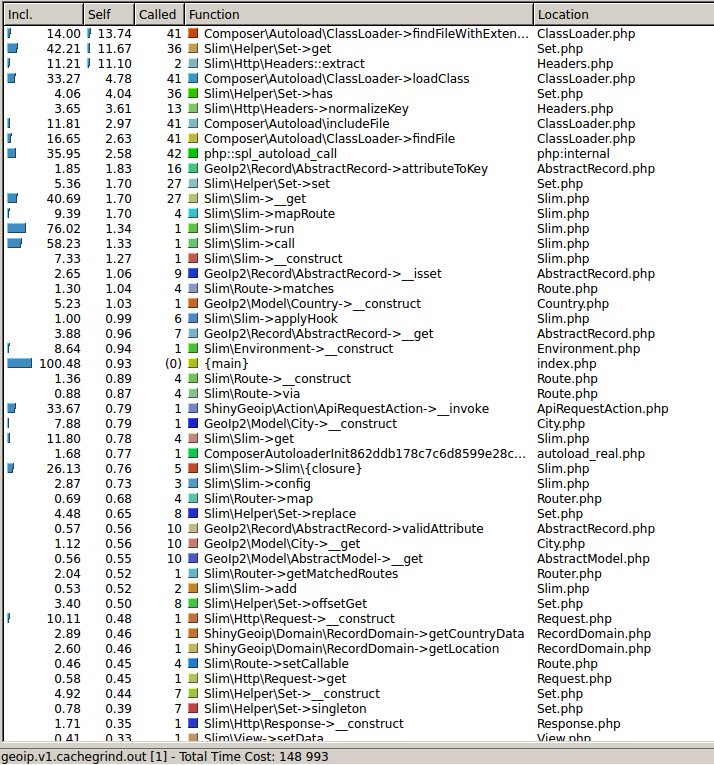
The result was kind of shocking: Hundreds of method calls for an extremely simple task. And if you take a closer look you will notice that most of the executed code is not even from the core application but from the Slim framework, composer and other vendor libs.
Making a plan
After analyzing the results I defined some goals for the version 2 sourcecode:
- Drop Slim (or any other) framework.
- Drop composer and autoloading.
- Drop as many vendor libs as possible.
- Reduce complexity of sourcecode to as little methods as possible while still keeping a clean structured codebase.
- Do not change API or API responses.
The last point was very important due to the fact that that there are many websites using the API of http://geoip.nekudo.com and I did not want to break their code.
The result
I managed to adjust the sourcecode and achieve all the goals. I dropped Slim and Composer and cut the used vendor libs down to one. This one luckily is available as PHP extension implemented in C so it's extremely fast. I also refactored the sourcecode of the core application while sticking to the Action-Domain-Responder pattern.
Here is a profiling of the same request as before hitting the version 2.0 source:
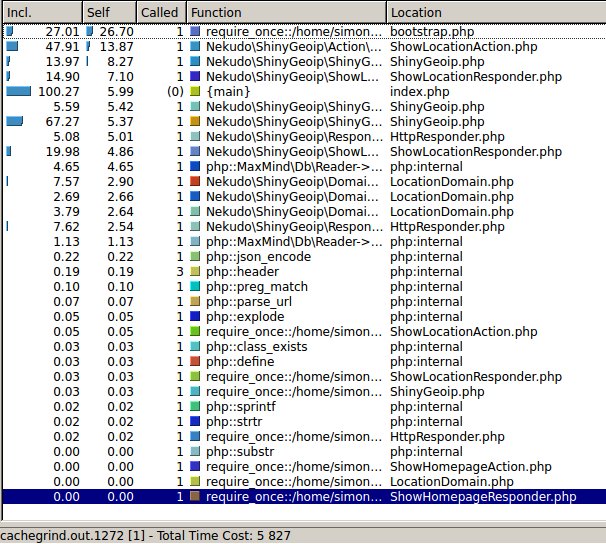
The direct comparison is quiet impressive. There is now only about 30 method calls before delivering the result to the user. The overall time cost is only about 4% of the time the same request took in version 1.
Of course: This is only a few microseconds but on a "high traffic" website this can make a huge difference as I will show in the next section.
The deployment
My free geolocation API at http://geoip.nekudo.com currently runs on two servers. One machine runs PHP 5.6 the other one is on PHP 7.0.5. I deployed version 2.0 of ShinyGeoip to both servers today - here is what happened:
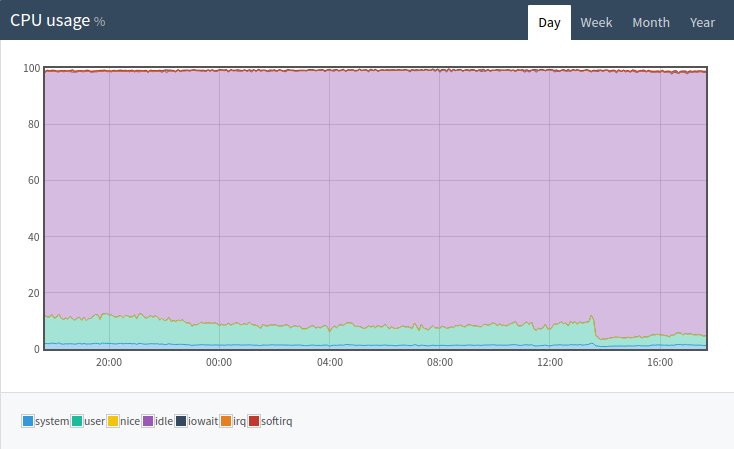
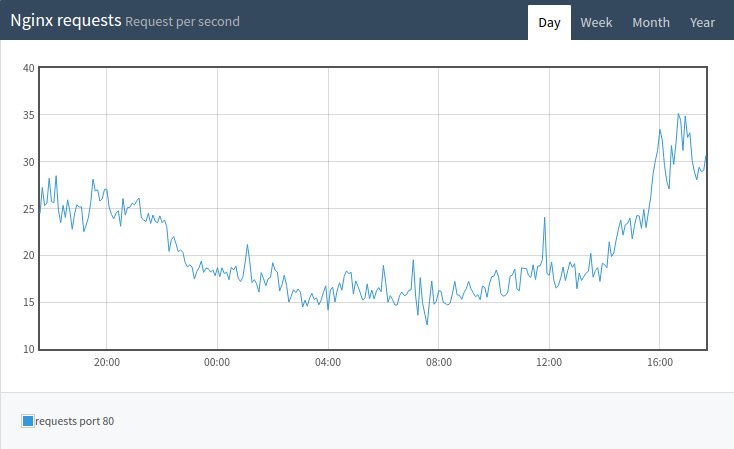
The two graphs show the CPU usage and requests per second hitting the nginx server. You can clearly see how the CPU usage goes down after deploying version 2.0 of the software while the req/s stay at the same rate or even increase.
This was the PHP 5 machine. Here are the same graphs for the PHP 7 machine:
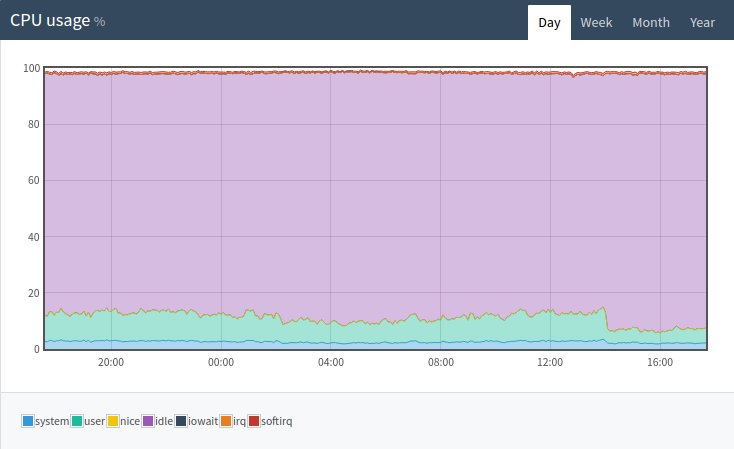
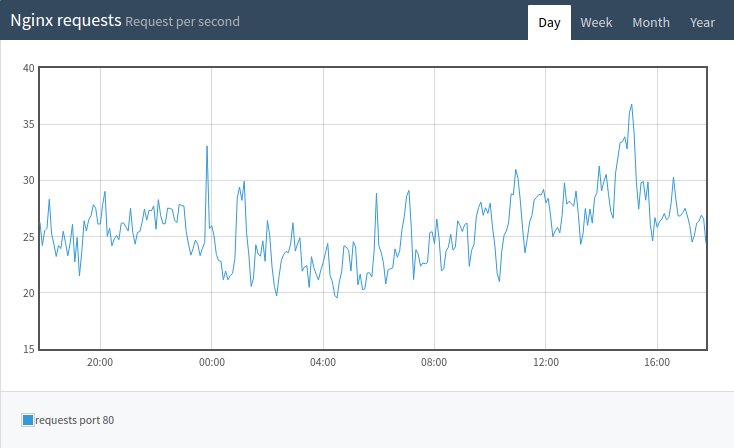
It's basically the same result but it seems the effect is slightly higher on PHP 5 than on PHP 7.
Conclusion
My lesson learned: Optimizing your source-code matters even more on "high traffic" websites. I definitely recommend to do a sourcecode-profiling of you application to reveal possibilities of performance improvements.
And (I can't say this enough): It's not always the best solution do develop an application by selecting a framework and pull in some vendor libraries using composer. I know it's tempting and fast but be careful when it comes to performance.
Happy hacking :)